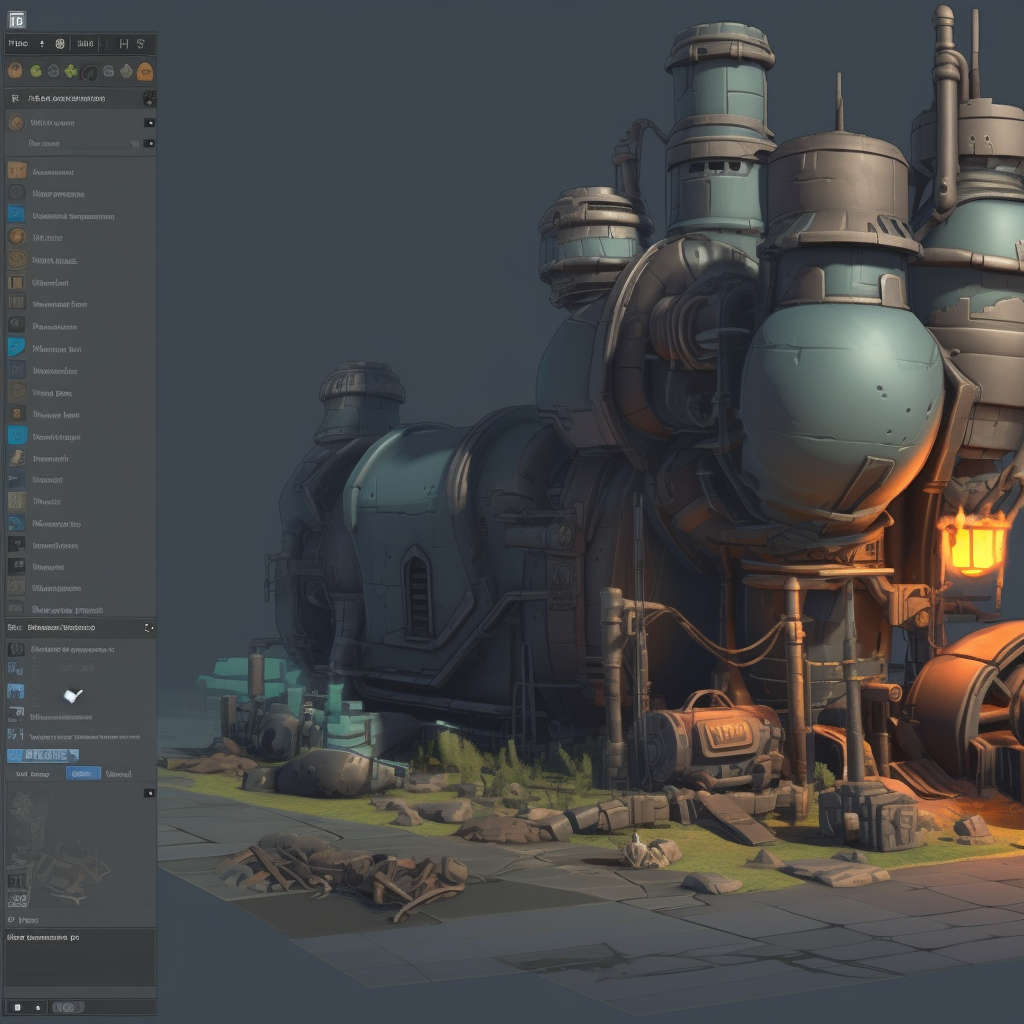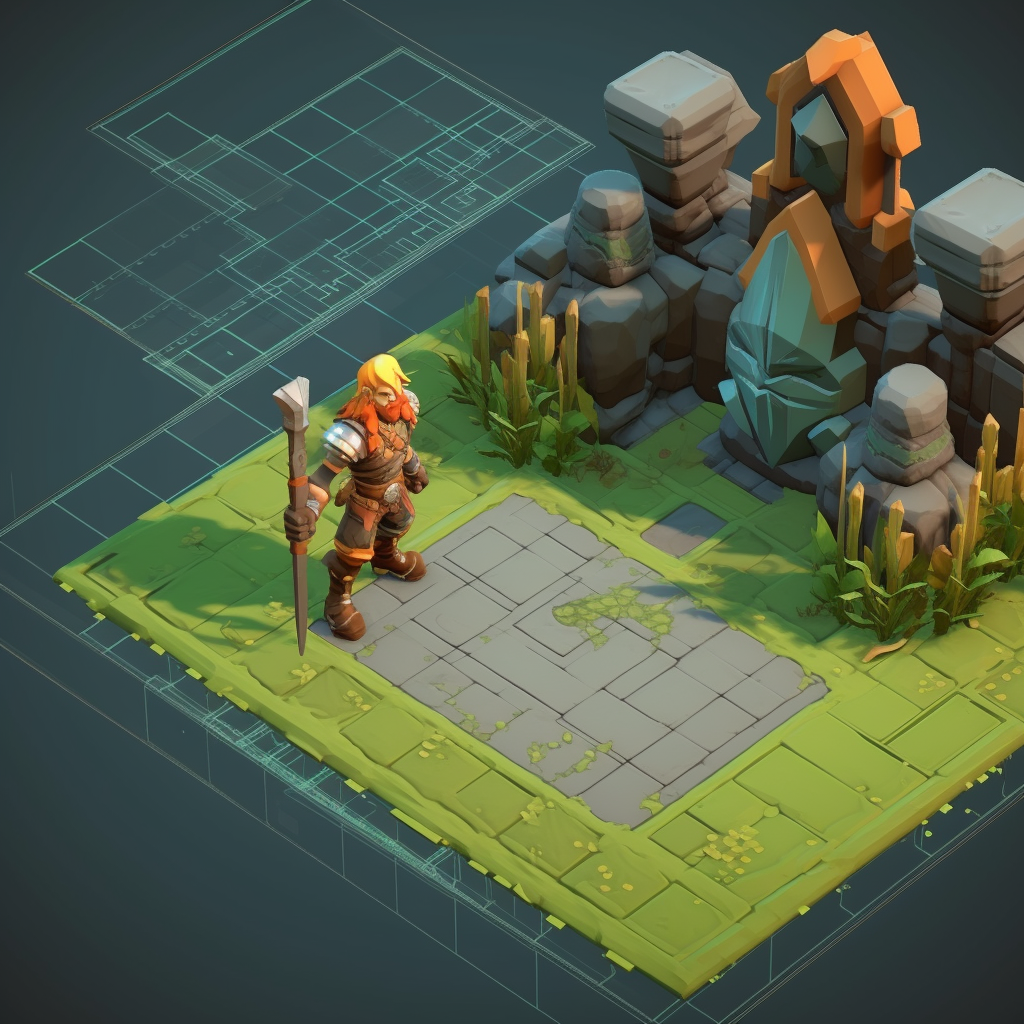Are you a game developer looking to create engaging and believable 3D and 2D assets for your latest video game? Do you struggle with finding time-efficient techniques for creating immersive environments and unique characters? Developing the visual elements of a successful video game can be an incredibly difficult task, but if you’re well-versed in the best practices for creating effective 3D or 2D visuals, it opens up endless possibilities. In this blog post, we’ll dive into some proven tips and techniques that will help make your next game design project a triumph!
Understand the different types of 2D and 3D assets and how they can be used in video games
When it comes to creating video games, understanding the types of assets available can be crucial in producing engaging gameplay. 2D assets include graphics such as images and sprites, while 3D assets encompass anything from models to animations. Each type of asset can be used in different ways to enhance gameplay and create a unique player experience. For example, 2D assets can be used for creating a classic side-scrolling game, while 3D assets can be used for realistic or immersive environments. A good grasp of the types of assets available and how they can be used is essential for any game developer or designer.
Learn about the different software tools available for creating 2D and 3D assets
As technology advances, so does the world of digital art. Creating 2D and 3D assets requires specialized software tools, each with its own unique set of features and capabilities. Some popular options for 2D asset creation include Adobe Illustrator, CorelDRAW, and Sketch. For those interested in 3D asset creation, Blender and Autodesk Maya offer powerful tools for modeling and animation. Additionally, game developers may find Unity and Unreal Engine useful for creating interactive 3D environments. With so many software options available, it’s important to consider your specific needs and skill level when choosing a tool for your digital art projects.
Identify the important components of designing 2D and 3D game assets
Designing game assets is an integral part of creating engaging and unique gaming experiences. When it comes to creating 2D and 3D game assets, there are important components that game developers must consider. One of the most crucial aspects is the artistic style, which includes the visual look and feel of the game. This includes designing characters, backgrounds, objects, and environments that fit the game’s theme and genre. Another important consideration is ensuring that the assets are optimized for performance, allowing the game to run smoothly on a variety of platforms. Additionally, game developers need to pay attention to the technical aspects of the assets, such as creating models and textures that can be easily imported into game engines. Overall, designing game assets requires a careful balance between aesthetic appeal and technical functionality to deliver an immersive gaming experience.

Explore different techniques to optimize performance when creating game assets
When it comes to creating game assets, optimizing performance is a crucial aspect that can make or break the player experience. There are various techniques that game developers use to ensure that the assets they create not only look great but also function efficiently. One of the key techniques is to use efficient algorithms that speed up processing times. Additionally, reducing the number of polygons used in 3D models can help to optimize asset performance. Another aspect that should not be overlooked is the texture compression format used for images, as this can have a significant impact on the final file size and loading times. Overall, implementing these techniques and others can help to ensure that game assets are optimized for the best possible performance, allowing players to fully immerse themselves in the gaming experience.
Implement basic lighting techniques to create an immersive gaming experience
When it comes to creating an immersive gaming experience, lighting plays a crucial role. Basic lighting techniques can be implemented to enhance the mood and ambiance of the game, ultimately transporting the player into the virtual world. One technique is to use contrasting lights and shadows to create depth and realism. Another technique is to use colored lighting to evoke a specific emotion or tone. It’s important to also consider the placement of lights, as this can affect the player’s navigation and understanding of the game environment. By mastering these basic lighting techniques, game developers can elevate their creations from a mere visual experience to an immersive journey for the player.
Utilize texturing and shading methods to give your game assets a realistic look
If you want your game to stand out and look as realistic as possible, texturing and shading are crucial elements to consider. Texturing adds depth and detail to your game assets, giving them a lifelike appearance, while shading creates the illusion of light and shadow. These methods allow for a range of effects, such as the appearance of rough or smooth surfaces, reflective or matte materials, and more. To utilize these techniques effectively, it’s essential to have a solid understanding of the principles of light and shadow, as well as texturing tools and software. With the right combination of texturing and shading, you can elevate your game to a whole new level of realism.
To summarize, 2D and 3D game assets are an important part of creating a successful video game as they can help to set the tone, engage the player, and create an immersive gaming experience. It is essential to understand the different types of assets, the software tools available for creating them, as well as the components of designing high-quality 2D and 3D assets. Optimizing asset performance is also key in order to ensure that the game will run smoothly. In addition, incorporating basic lighting techniques can add a unique touch while texturing and shading will give assets a realistic look. With careful planning and thoughtful execution, your game can bring your vision to life—and provide your players with an unforgettable gaming experience.




